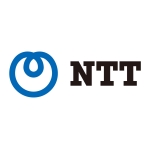—Contributing to the Creation of New Wireless Services Enabled by IOWN and 6G—
TOKYO–(BUSINESS WIRE)–Aiming to implement terabit-class wireless transmission to support wireless demand in the 2030s, NTT Corporation (NTT) has successfully achieved the world’s first “orbital angular momentum (OAM) multiplexing high-capacity wireless transmission—at 1.44 Tbit/s—using an ultra-wide bandwidth of 32 GHz. As an innovative wireless-communication technology that uses the sub-terahertz (sub-THz) band, this achievement will enable wireless access to vast amounts of information at data-transfer rate exceeding 1 Tbit/s. This achievement was realized using the sub-THz band within the range from 135 GHz to 170 GHz, and is an innovative wireless communication technology that enables wireless access to a huge amount of information exceeding 1 Tbit/s. As a key element of the “Innovative Optical and Wireless Network” (IOWN), which we aim to implement with our global partners, it is an extension of the high-capacity communication network and information-processing infrastructure centered on light to wireless networks including 6G.
Aiming to support the high-capacity network and information processing infrastructure of the IOWN and 6G and prepare for the increasing future demand for wireless communications, NTT is engaged in research and development with the goal of achieving terabit-class wireless transmission. To enhance the capacity of wireless communications, NTT is increasing the spatial multiplexing order by applying on a new principle using radio waves with “orbital angular momentum” (Figure 1) to increase wireless-transmission capacity and using the sub-terahertz (sub-THz) band to increase transmission bandwidth.
The approach taken by NTT is to use an analog circuit called a “Butler matrix” to increase the spatial multiplexing order by multiplexing multiple OAM waves. This approach reduces the enormous amount of digital signal processing required to eliminate interference between multiplexed data streams in high-capacity communications exceeding one terabit.
In this research, NTT has promoted research and development of sub-THz-band waveguide technology and succeeded in developing an antenna-integrated Butler matrix that operates with a wide bandwidth and low loss. The antenna-integrated Butler matrix is designed to simultaneously generate and separate eight different OAM waves over a very wide bandwidth, i.e., 135 to 170 GHz, which can be used to multiplex and transmit eight data signals. Moreover, by performing OAM multiplexing transmission with two different polarizations, it is possible to multiplex and transmit twice as many data signals simultaneously without them interfering. We conducted transmission tests using the antenna-integrated Butler matrix, and we achieved the world’s first successful large-capacity wireless transmission totaling 1.44 Tbit/s in the sub-THz bands of 135.5 to 151.5 GHz and 152.5 to 168.5 GHz (Figure 2). This transmission capacity is equivalent to the speed of simultaneous transmission of approximately 35,000 ultra-high-definition 4K videos (at about 40 Mbit/s) that can be available on current video websites. This speed enables the simultaneous transmission of 140 or more uncompressed 4K videos (at about 10 Gbit/s) for applications that require ultra-low latency.
This technology is expected to enable (i) broadband and high-speed wireless transmission comparable to optical transmission systems and (ii) seamless connection between wireless and optical transmission systems without the need for a complex digital signal-processing system for spatial multiplexing, since the analog circuit (i.e., the Butler matrix) handles the multiplexing of OAM waves. The next step in this development is to conduct demonstrations over longer distances (exceeding 100 m) while envisioning various applications of this technology in the real world, including wireless backhaul/fronthaul between base stations and relay transmission (Figure 3). We expect the eventual development of this technology to support the creation and spread of various future services, such as VR/AR (virtual reality/augmented reality), high-definition video transmission, connected cars, and telemedicine, as innovative wireless-communication technology in the IOWN and 6G era.
Contacts
[Media Contact]
NTT Corporation,
Science and Core Technology Laboratory Group,
[email protected]








